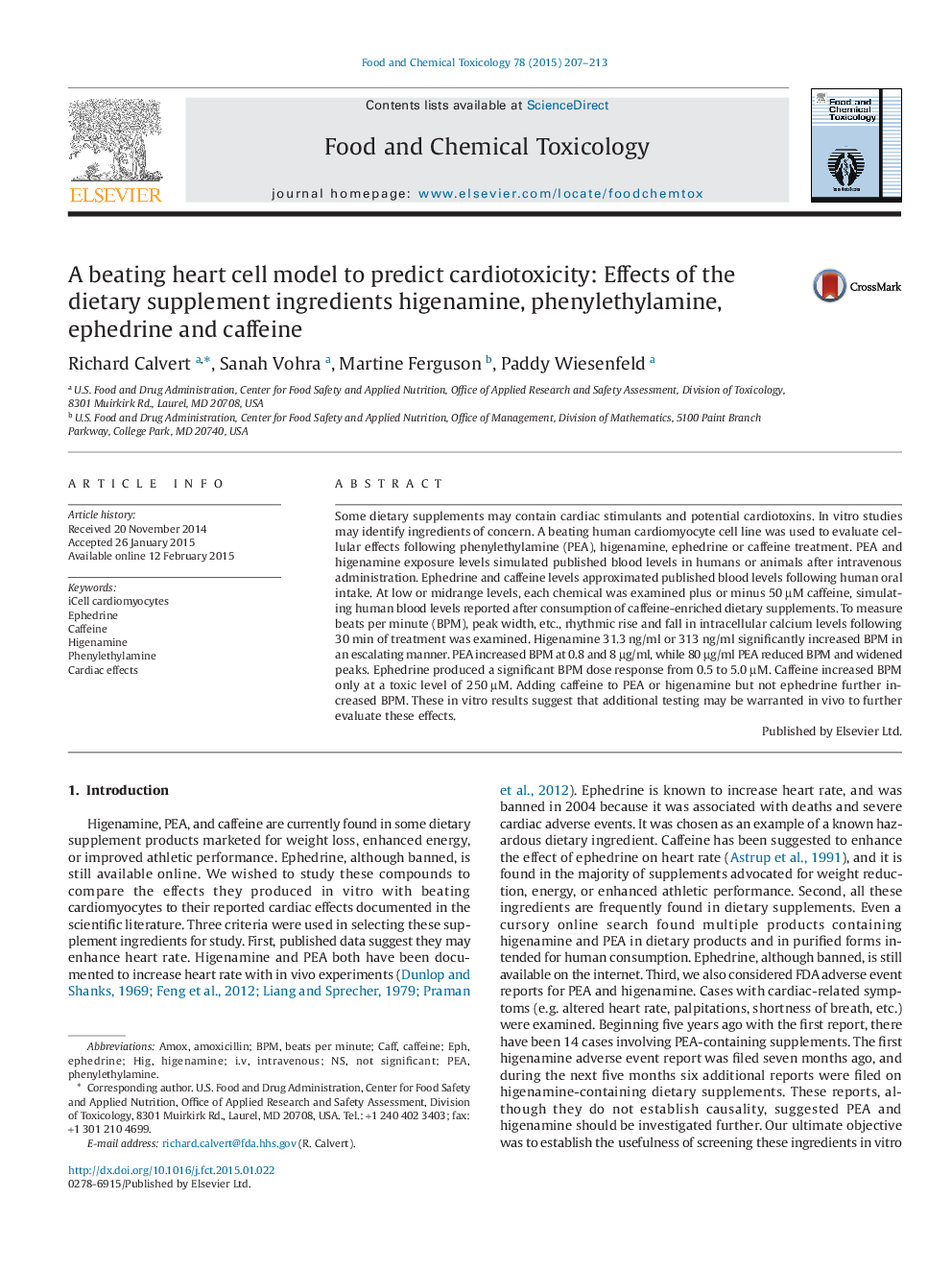| Article ID | Journal | Published Year | Pages | File Type |
|---|---|---|---|---|
| 5849939 | Food and Chemical Toxicology | 2015 | 7 Pages |
Abstract
Some dietary supplements may contain cardiac stimulants and potential cardiotoxins. In vitro studies may identify ingredients of concern. A beating human cardiomyocyte cell line was used to evaluate cellular effects following phenylethylamine (PEA), higenamine, ephedrine or caffeine treatment. PEA and higenamine exposure levels simulated published blood levels in humans or animals after intravenous administration. Ephedrine and caffeine levels approximated published blood levels following human oral intake. At low or midrange levels, each chemical was examined plus or minus 50âµM caffeine, simulating human blood levels reported after consumption of caffeine-enriched dietary supplements. To measure beats per minute (BPM), peak width, etc., rhythmic rise and fall in intracellular calcium levels following 30âmin of treatment was examined. Higenamine 31.3âng/ml or 313âng/ml significantly increased BPM in an escalating manner. PEA increased BPM at 0.8 and 8âµg/ml, while 80âµg/ml PEA reduced BPM and widened peaks. Ephedrine produced a significant BPM dose response from 0.5 to 5.0âµM. Caffeine increased BPM only at a toxic level of 250âµM. Adding caffeine to PEA or higenamine but not ephedrine further increased BPM. These in vitro results suggest that additional testing may be warranted in vivo to further evaluate these effects.
Keywords
Related Topics
Life Sciences
Agricultural and Biological Sciences
Food Science
Authors
Richard Calvert, Sanah Vohra, Martine Ferguson, Paddy Wiesenfeld,
